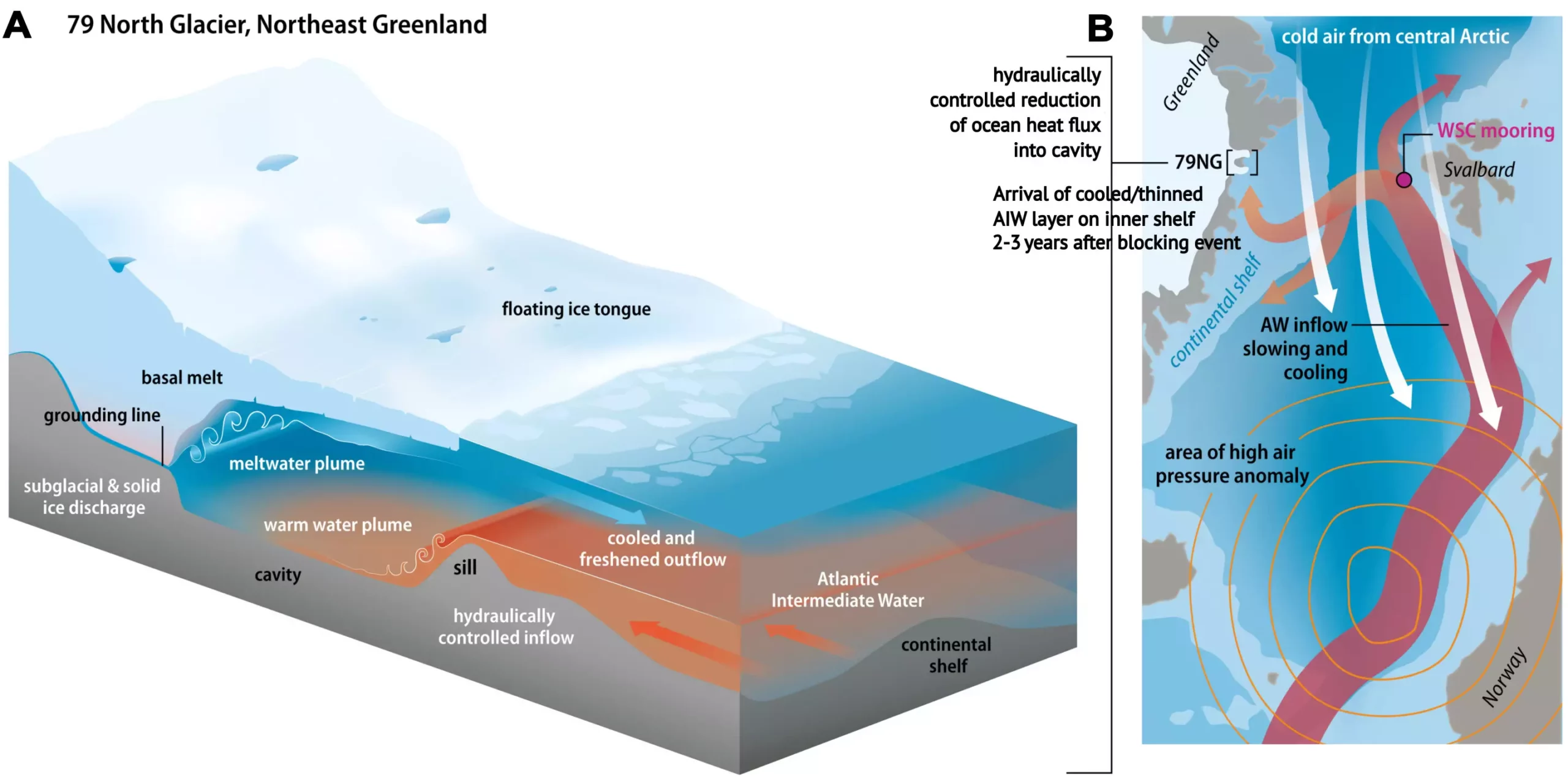The 79° N Glacier, located in Northeast Greenland, stands as a monumental reminder of the climate crisis. This massive floating glacier tongue is not only the largest in its region but is also among the most vulnerable to the relentless forces of global warming. Recent studies indicate the glacier, like many others around the world, is under threat from the warming waters of the Atlantic, which erode its foundation from below. The situation is complex, however, as it becomes apparent that local and regional climatic alterations can lead to unexpected changes in the glacier’s melting patterns.
Research led by the Alfred Wegener Institute counters the narratives of relentless warming. Data collected between 2018 and 2021 showed a curious decline in the temperature of the water infiltrating the glacier’s cavern, despite the continued rise of temperatures in nearby ocean areas over the past few decades. This sudden drop has opened conversations about potential changes in atmospheric circulation patterns playing a role in this anomaly. The implications are profound; if this cooling proves to be more than just a short-lived phenomenon, it could significantly alter projections of mass loss from the ice sheet.
Dr. Rebecca McPherson, an author of the study published in the journal Science, highlights this unexpected cooling trend. She emphasizes that, due to the dip in temperature, the glacier’s melting was affected, albeit temporarily. A slowdown in melting implies a brief respite for the ice structure, highlighting the necessity of carefully monitoring atmospheric conditions and their direct effects on glacial dynamics.
Understanding where the cold water came from requires delving deeper into large-scale atmospheric phenomena. The AWI team’s analysis traced the cooler water’s origin upstream, linking it back to the Fram Strait and Norwegian Sea. In essence, atmospheric blocking near Europe allowed colder Arctic air to penetrate into these ocean regions. This deviation from typical weather patterns influenced water temperature as it traveled towards Greenland, leading to more cooling than would usually occur.
Such atmospheric blocks create a ripple effect that can alter the temperature dynamics of ocean currents. These currents not only play a pivotal role in determining ice melt rates but also contribute to broader climatic implications, such as impacts on sea ice extent and thickness. Consequently, the evaluation of Arctic glacial behavior must consider complex, interlinked climatic systems.
The temperature data reveals a stark interaction between atmospheric conditions and the glacier’s melting dynamics. As cooler water flows from its source to the glacier, the entire sequence—from the formation of high-pressure systems causing atmospheric blocks to the influx of cooler Atlantic water—takes years to manifest. This underscores the importance of long-term observation to fully grasp these interactions.
The AWI researchers are already contemplating a return to the 79° N Glacier in 2025, armed with the knowledge that ambient water temperatures are on the rise again in the Fram Strait. This raised water temperature could potentially trigger increased melting, illuminating the crucial timeline of effects stemming from oceanic changes.
The phenomenon observed at the 79° N Glacier demonstrates the need for comprehensive monitoring and predictive modeling in light of climate change. Dr. McPherson points out that the understanding from their study paves the way for refining predictions concerning sea-level rise. Global attention remains focused on Greenland as an indicator of climate change, but without rigorous data collection and analysis, the future remains uncertain.
Climate scientists are facing the conundrum of an unpredictable climatic landscape. The interplay between the warm-water inflow and the stability of glaciers such as 79° N is an example of the myriad factors at work. As these glaciers retreat, their impact on polar ecosystems and global sea levels expands, magnifying the urgent need for a deeper understanding of Arctic weather patterns and ocean circulatory systems.
The 79° N Glacier serves as a critical barometer for the effects of climate change in the Arctic region. The successful navigation of its melting dynamics hinges on unraveling the intricate weaving of oceanic currents and atmospheric patterns. The lessons derived from studying such glacial systems will help inform climate policies and adaptation strategies essential for mitigating broader ecological impacts anticipated in a warming world. As this research unfolds, it prompts a crucial call for increased scientific endeavors to understand the pace and consequences of environmental change, keeping our focus sharp on the fluctuating health of our planet’s glaciers.


Leave a Reply